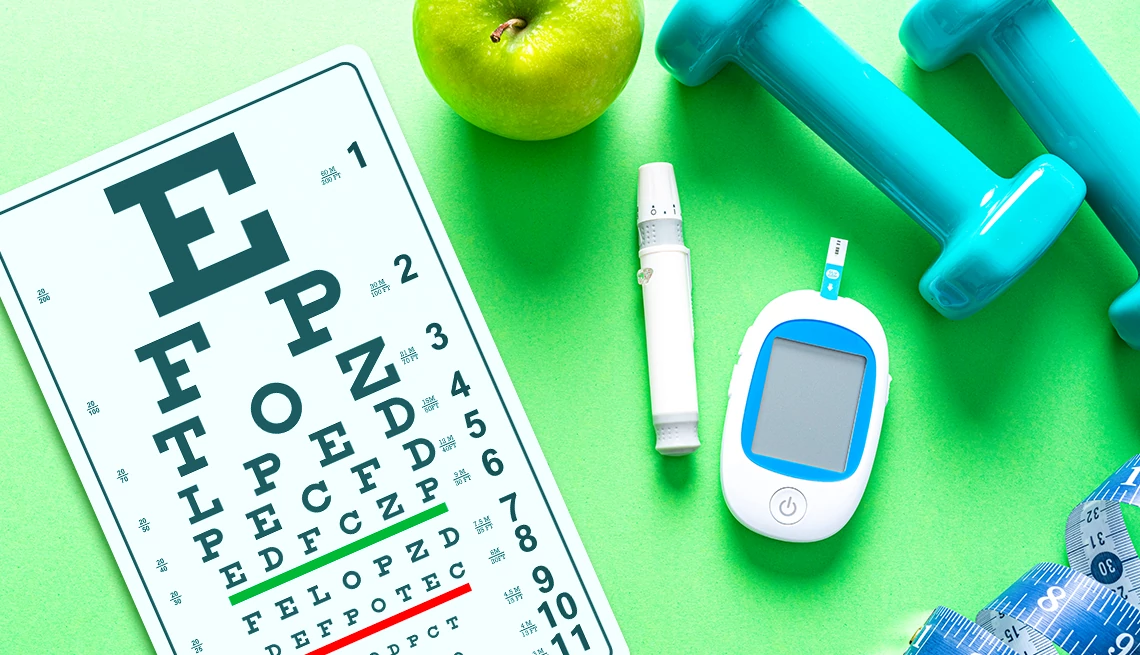
Diabetic Retinopathy: Causes, Prevention and Treatment
- Select a language for the TTS:
- UK English Female
- UK English Male
- US English Female
- US English Male
- Australian Female
- Australian Male
- Language selected: (auto detect) - EN
Play all audios:

These changes can blur your vision, and sometimes lead to swelling of the retina (macular edema), where fluid accumulates in the center of the retina, worsening vision in a way that cannot
be corrected with glasses. If untreated, chronic macular edema can result in irreversible damage to your sight. PROLIFERATIVE DIABETIC RETINOPATHY (PDR) PDR is the most severe stage of
diabetic retinopathy. Here, the damaged blood vessels in the retina have closed off, cutting off oxygen supply to the retina. In response, the body grows new blood vessels along the surface
of the retina to try to restore nourishment. However, these new vessels are fragile and can easily burst with minor activities. When they bleed, they may fill the eye with blood, creating
further complications and increasing the risk of retinal detachment as they pull on the retina. What’s more, scar tissue may form around these new blood vessels, which can contract and pull
on the retina, potentially causing retinal detachment. “Sometimes you can have proliferative diabetic retinopathy and not even know it, says Olmos de Koo. “The central vision might be good,
but you might have new blood vessels growing in the periphery or on the edges of the retina that haven't yet bled or tugged.” WHAT DOES DIABETIC RETINOPATHY LOOK LIKE IN THE EYE? If you
notice new eye floaters — tiny black specks or strands in your vision — it’s important to schedule a dilated eye exam, even if you don’t have diabetes. Only in very rare and severe cases
can signs of diabetic retinopathy be visible by looking in the mirror. A dilated eye exam allows the doctor to thoroughly inspect the retina — the light-sensitive tissue lining the inner
eyewall, which contains delicate blood vessels. During the exam, your eye doctor will check for signs of retinopathy, including blood spots, fatty deposits, swelling, or the growth of new,
fragile blood vessels. DIABETIC RETINOPATHY MAINTENANCE AND PREVENTION Even if you don’t have diabetes, adults age 50 and older should check in with their primary care provider annually to
rule out a diabetes diagnosis. “Sometimes, diabetes can creep up on you. You may feel fine and not be aware, causing damage in your eyes,” says Olmos de Koo. For those with diabetes,
prevention starts with managing blood sugar levels. It's essential to work with your primary care provider or endocrinologist to discuss medications, lifestyle changes, and dietary
adjustments that can help control blood sugar. “Even with the best ophthalmology treatments that we can provide, if the blood sugar remains high, a lot of times we’re not going to make a lot
of leeway,” says Olmos de Koo. If you have mild or moderate NPDR, immediate treatment may not be necessary, but your ophthalmologist will monitor your eyes closely. Keeping your blood sugar
in check can usually halt the progression and curb vision loss, and sometimes can even restore some of your vision.
